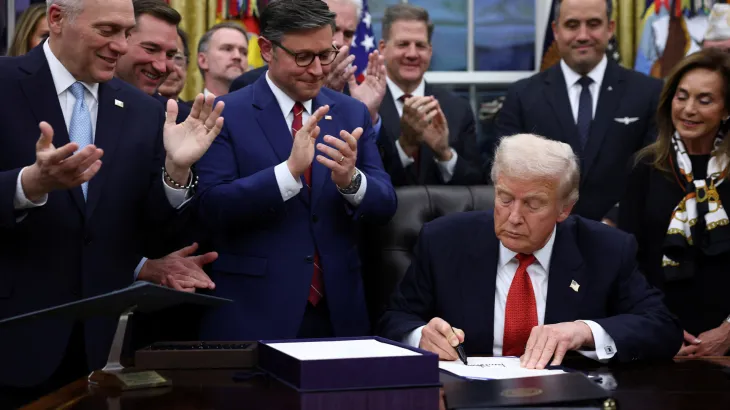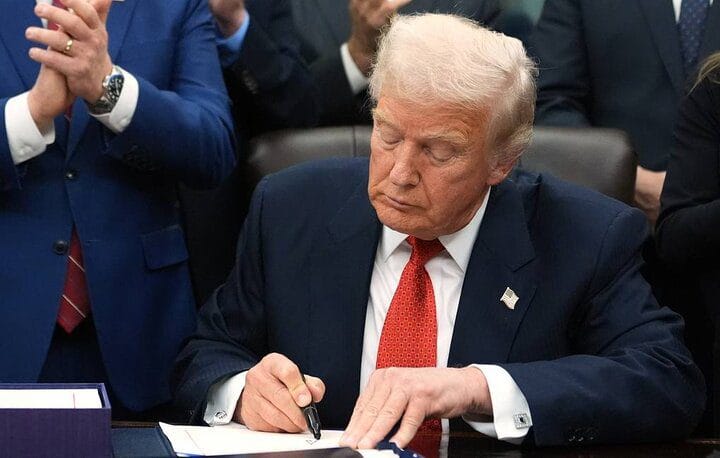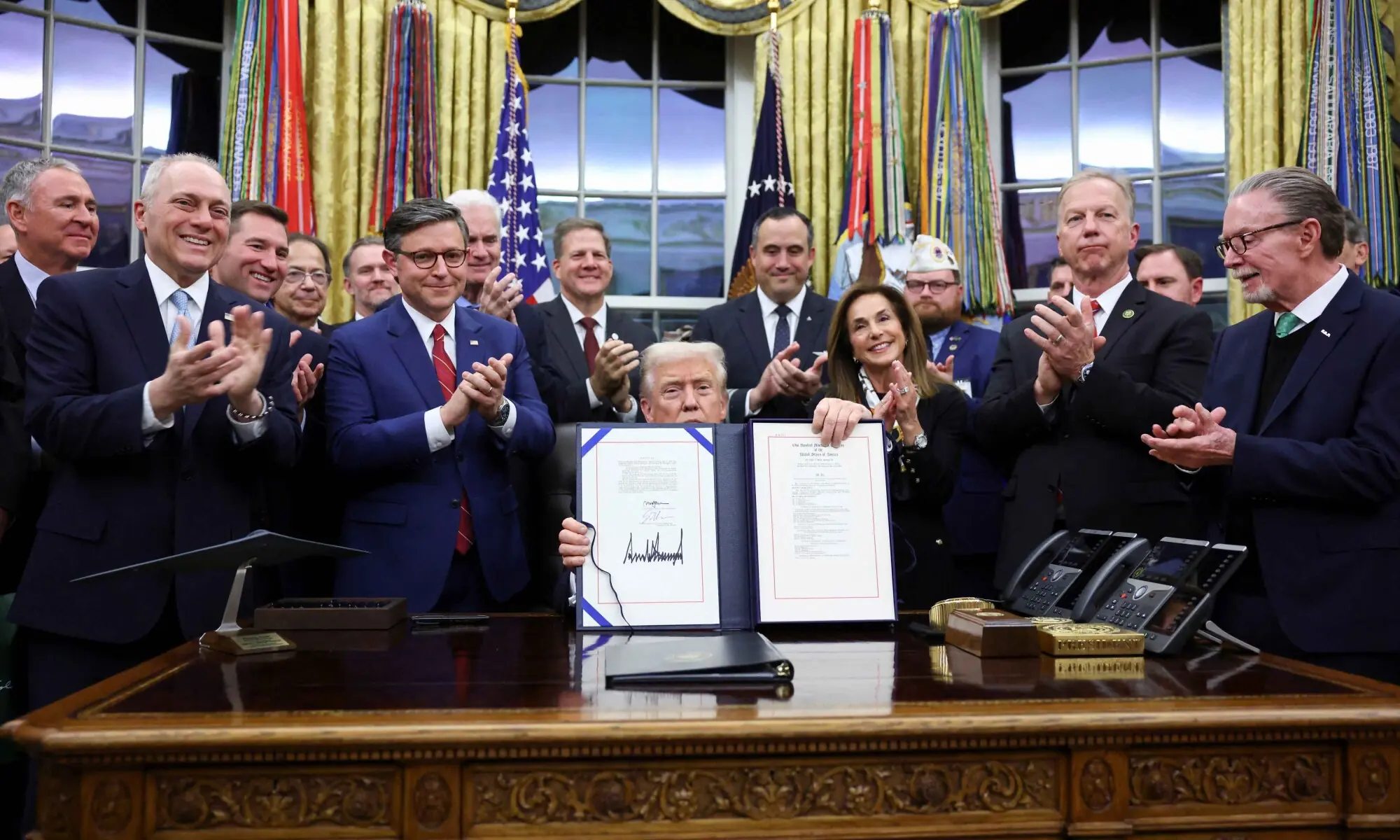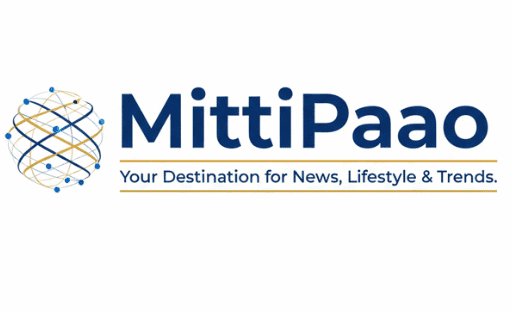The United States has emerged from an unprecedented political and economic ordeal(Shutdown). President Donald Trump signed a funding bill late Wednesday. This action officially ended the longest government shutdown in U.S. history. The funding lapse lasted a punishing 43 days. It crippled critical public services. It left hundreds of thousands of federal workers without paychecks. This resolution, however, leaves behind a trail of disruption. It also sets the stage for the next unavoidable budget battle early next year. Ultimately, the conclusion of this stalemate underscores the deep partisan divisions that define governance in the nation’s capital.
A Staggering Stalemate: The 43-Day Record Shutdown
The shutdown began on October 1st. It started after Congress failed to pass appropriations bills. This failure left many agencies without necessary funding. The impasse quickly became the longest in modern U.S. history. It surpassed the previous 35-day record set during the first Trump administration.
The Core Conflict: Healthcare Subsidies
The battle was fundamentally centered on healthcare spending. Democrats demanded the extension of popular health insurance tax credits. These subsidies were established under the Affordable Care Act (ACA). They help millions of Americans afford their insurance premiums. Conversely, Republicans, controlling both chambers of Congress and the White House, refused to negotiate on healthcare. They insisted that the government must be reopened first. This deadlock paralyzed Capitol Hill for over six weeks. It led to repeated, failed attempts to pass funding measures. The dispute highlighted the intense, ideological fight over the future of American healthcare policy.
The Widespread Economic and Social Toll
The impact of the 43-day logjam was immediate and severe. Over 670,000 federal employees were furloughed or forced to work without pay. This financial strain was felt across the country. It led to long lines at food banks. It also forced many families to drain their savings. Furthermore, public services suffered widespread disruption. Major U.S. airports experienced thousands of flight cancellations and delays. This occurred due to staffing shortages among air-traffic controllers and TSA agents. The Supplemental Nutrition Assistance Program (SNAP) also faced funding depletion. This threatened food assistance for over 42 million recipients. Overall, the non-partisan Congressional Budget Office estimates the shutdown will leave a permanent dent in economic output.

The Breakthrough: A Senate Compromise Shutdown
The end of the shutdown did not come from a grand bipartisan agreement. It resulted instead from a political compromise brokered by a small group of moderate senators.
The Bipartisan Rebellion
The Senate, which required 60 votes to advance the funding measure, had been the primary roadblock. The gridlock finally broke over the weekend. A group of eight Democrats and one independent agreed to a deal with Republican leadership. They chose to break ranks with their party. These lawmakers concluded that Republicans would not budge on the healthcare subsidies. They secured a nonbinding promise. Majority Leader John Thune guaranteed a vote on the ACA subsidies by mid-December. This concession was enough for the moderate Democrats to reverse their position. The Senate quickly approved the compromise.
The Final Legislative Steps
The House of Representatives passed the legislation late Wednesday. The final vote was 222 to 209. The measure was passed with the support of nearly all Republicans and six Democrats. These Democrats, representing swing districts, prioritized reopening the government. Despite strong opposition from most House Democrats, the bill quickly made its way to the Oval Office. President Trump signed the measure shortly after. He used the moment to launch harsh criticism. This blamed the entire shutdown on Democrats. He labeled their efforts to secure healthcare funding as “extortion.”
Immediate Relief and Lingering Uncertainty Shutdown
President Trump’s signature brought instant, though temporary, relief to the nation. Federal workers will return to their jobs immediately. They are guaranteed to receive back pay.
Restored Services and Employee Protections
The signed bill provides crucial provisions for federal employees. It reverses the mass layoffs that the Trump administration had initiated during the shutdown. It prevents further job reductions through the end of January. Furthermore, funding for critical programs like SNAP and WIC will resume immediately. The resumption of air traffic control and TSA operations is expected to ease travel disruptions. This timing is vital. It comes just before the busy Thanksgiving holiday travel period. The end of the funding lapse also means that key statistical agencies will resume publishing economic data. This data is essential for investors and policymakers.

The January 30th Cliff
However, the resolution is only temporary. The stopgap measure only funds most federal agencies through January 30, 2026. This sets up another, almost guaranteed, funding fight early next year. The major issue of the expiring ACA tax credits remains unresolved. Democratic leaders vowed to continue their fight for the subsidies. The nonbinding promise of a December vote provides only a brief window. Millions of Americans who rely on those health credits could face steep premium hikes if Congress fails to act before the end of the year. Therefore, the longest government shutdown in history ended not with a solution. It ended instead with a postponement of the underlying political conflict.
A Costly Political Precedent Shutdown
President Trump’s signing of the funding bill brought an end to the 43-day standoff. It concluded a deeply divisive chapter in U.S. political history. The shutdown demonstrated the extreme lengths to which both parties are willing to go. They are willing to use the government funding process as a political weapon. The cost was immense. It impacted the lives of hundreds of thousands of federal workers. It inflicted billions of dollars in economic damage. The final bill was a victory for pragmatic, stability-seeking lawmakers. It was not a victory for comprehensive compromise. The longest shutdown ever serves as a stark warning. It shows the catastrophic consequences that arise when ideology trumps governance. The nation now looks to January 30th. It waits to see if the political cycle of crisis and reprieve will repeat itself. Shutdown
Read More Articles Click Here. Read Previous Article Click Here.

